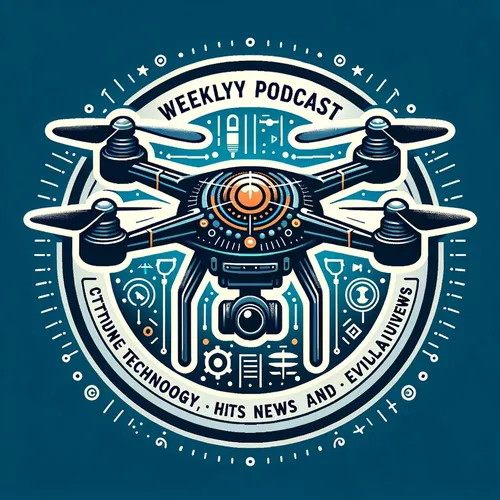Drone Drama: Cyber Battles, Warrior Training, and Cargo Contenders!
- Author
- Quiet. Please
- Published
- Sat 06 Sep 2025
- Episode Link
- https://www.spreaker.com/episode/drone-drama-cyber-battles-warrior-training-and-cargo-contenders--67652534
This is you Drone Technology Daily: UAV News & Reviews podcast.
Drone technology continues its rapid evolution with the past twenty-four hours highlighting just how global and transformative the space has become. In Eastern Europe, Trypillian, a British-Ukrainian defense startup founded by veterans and military experts in 2024, secured five million dollars in fresh investment. This injection is set to accelerate development of the Trypillian SSG autonomous strike drone, unique for its ability to operate independently of satellite navigation. By bypassing the risks of GPS jamming, this platform promises mission reliability in highly contested environments, a critical advantage as modern battlefields become electronic warfare arenas. The approach aligns with the latest defense innovation trend: leveraging autonomous swarms to exhaust enemy air defenses while maintaining cost efficiency. Trypillian’s rapid integration into Ukraine's Diia.City digital economy platform further reflects a growing fusion of military innovation and national tech strategy, an example not just restricted to Europe.
Across the Pacific, South Korea’s Defense Ministry announced plans to train half a million “drone warriors.” Pilot projects, starting with the military’s Thirty Sixth Division, are laying the groundwork for new operational concepts built around artificial intelligence and unmanned systems. This step aims to position South Korea’s domestic drone industry on the global stage, providing a model for skills development and force transformation. Meanwhile, North Korea presses forward as well, investing in AI-guided strike drones and reconnaissance platforms.
Turning to the United States, there’s significant movement in regulation. The Federal Aviation Administration’s draft rules for beyond visual line of sight operations are open for public comment until October sixth. If adopted, the rules will shift away from the current waiver-centric model to risk-based, scalable regulation. Operators and manufacturers are now advised to review compliance programs and prepare for more stringent certification, training, and cybersecurity requirements. These efforts are bolstered by a White House directive from June requiring federal agencies to publish geofencing data, improve remote identification access for law enforcement, and plan for enhanced counter-unmanned systems during major upcoming events.
On the commercial front, battery producer Amprius announced a surge in U S manufacturing, reflecting the federal drive to secure domestic supply chains just as demand for both recreational and enterprise drones intensifies. Market data from Amprius and industry analysts points to double digit growth in the U S drone sector through the year, propelled by expansion in automated logistics, agriculture, inspection, and defense applications.
For today’s product review, listeners should take note of the upgraded Piasecki Kargo Two UAV. Now boasting three times the payload of its original design, this platform is tailored for autonomous logistics, crucial for military resupply and commercial shipping alike. Initial field tests demonstrate robust performance, reliable flight autonomy, and efficient cargo deployment, making it a strong contender for organizations seeking scalable aerial freight delivery.
Listeners operating drones should closely monitor evolving legal restrictions such as new no fly zones, privacy standards, and automated flight regulations. Key safety best practices include regular firmware updates, careful geofencing awareness, and strict adherence to both national and local standards. As traffic management solutions like NASA’s UTM Pilot Program roll out in American cities, safe integration with existing air traffic becomes ever more important.
Looking ahead, expect accelerating integration of artificial intelligence, expanded use of swarming tactics, and further...
